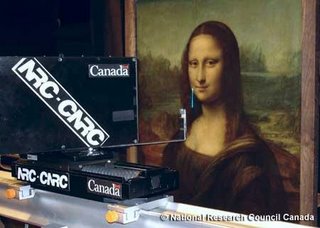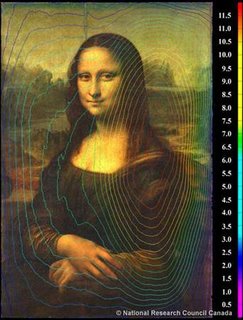In the early 1970s, the Toronto Society for Psychical Research (TSPR) conducted an experiment if they could create a ghost. They assembled a group of people, made up a completely fictional character and then, through seances, they could contacted him and receive messages and other physical phenomena - such as apparition. This proves some theories that most ghosts were created by our thoughts such as poltergeist - the noisy ghost.
How to Create a Ghost
In the 1970s, a psychical research group "invented" a spirit named Philip. To their astonishment, Philip actually made contact with them through a host of incredible psychokinetic phenomena.
A group of teenagers gathered around a Ouija board receives mysterious messages from a person's spirit who claims to have died 40 years ago. A paranormal society conducts a séance where they contact a ghost that communicates though table rappings. The residents of a century-old home continually see the spirit of a young child playing in the hallway.
What are these manifestations? Are they truly the ghosts of departed people? Or are they creations of the minds of the people who see them?
Many researchers of the paranormal suspect that ghostly manifestations and poltergeist phenomena (objects flying through the air, unexplained footsteps and door slammings) are products of the human mind. To test that idea, a fascinating experiment was conducted in the early 1970s by the Toronto Society for Psychical Research (TSPR) to see if they could create a ghost. The idea was to assemble a group of people who would make up a completely fictional character and then, through séances, see if they could contact him and receive messages and other physical phenomena - perhaps even an apparition.
The results of the experiment - which were fully documented on film and audiotape - are astonishing.
The Birth of Philip
The TSPR, under the guidance of Dr. A.R.G. Owen, assembled a group of eight people culled from its membership, none of whom claimed to have any psychic gifts. The group, which became known as the Owen group, consisted of Dr. Owen's wife, a woman who was the former chairperson of MENSA (an organization for high-IQ people), an industrial designer, an accountant, a housewife, a bookkeeper and a sociology student. A psychologist named Dr. Joel Whitton also attended many of the group's sessions as an observer.
The group's first task was to create their fictional historical character. Together they wrote a short biography of the person they named Philip Aylesford. Here, in part, is that biography:
Philip was an aristocratic Englishman, living in the middle 1600s at the time of Oliver Cromwell. He had been a supporter of the King, and was a Catholic. He was married to a beautiful but cold and frigid wife, Dorothea, the daughter of a neighboring nobleman.
One day when out riding on the boundaries of his estates Philip came across a gypsy encampment and saw there a beautiful dark-eyed girl raven-haired gypsy girl, Margo, and fell instantly in love with her. He brought her back secretly to live in the gatehouse, near the stables of Diddington Manor - his family home.
For some time he kept his love-nest secret, but eventually Dorothea, realizing he was keeping someone else there, found Margo, and accused her of witchcraft and stealing her husband. Philip was too scared of losing his reputation and his possessions to protest at the trial of Margo, and she was convicted of witchcraft and burned at the stake.
Philip was subsequently stricken with remorse that he had not tried to defend Margo and used to pace the battlements of Diddington in despair. Finally, one morning his body was found at the bottom of the battlements, whence he had cast himself in a fit of agony and remorse.
The Owen group even enlisted the artistic talents of one of its members to sketch a portrait of Philip (see picture above). With their creation's life and appearance now firmly established in their minds, the group began the second phase of the experiment: contact.
The Séances Begin
In September 1972, the group began their "sittings" - informal gatherings in which they would discuss Philip and his life, meditate on him and try to visualize their "collective hallucination" in more detail. These sittings, conducted in a fully lit room, went on for about a year with no results. Some members of the group occasionally claimed they felt a presence in the room, but there was no result they could consider any kind of communication from Philip.
So they changed their tactics. The group decided they might have better luck if they attempted to duplicate the atmosphere of a classic spiritualist séance. They dimmed the room's lights, sat around a table, sang songs and surrounded themselves with pictures of the type of castle they imagined Philip would have lived in, as well as objects from that time period.
It worked. During one evening's séance, the group received its first communication from Philip in the form of a distinct rap on the table. Soon Philip was answering questions asked by the group - one rap for yes, two for no. They knew it was Philip because, well, they asked him.
The sessions took off from there, producing a range of phenomena that could not be explained scientifically.
Through the table-rapping communication, the group was able to learn finer details about Philip's life. He even seemed to exhibit a personality, conveying his likes and dislikes, and his strong views on various subjects, made plain by the enthusiasm or hesitancy of his knockings. His "spirit" was also able to move the table, sliding it from side to side despite the fact that the floor was covered with thick carpeting. At times it would even "dance" on one leg.
Philip's Limitations and Power
That Philip was a creation of the group's collective imagination was evident in his limitations. Although he could accurately answer questions about events and people of his time period, it did not appear to be information that the group was unaware of. In other words, Philip's responses were coming from their subconscious - their own minds. Some members thought they heard whispers in response to questions, but no voice was ever captured on tape.
Philip's psychokinetic powers, however, were amazing and completely unexplained. If the group asked Philip to dim the lights, they would dim instantly. When asked to restore the lights, he would oblige. The table around which the group sat was almost always the focal point of peculiar phenomena. After feeling a cool breeze blow across the table, they asked Philip if he could cause it to start and stop at will. He could and he did.
The group noticed that the table itself felt different to the touch whenever Philip was present, having a subtle electric or "alive" quality. On a few occasions, a fine mist formed over the center of the table. Most astonishing, the group reported that the table would sometimes be so animated that it would rush over to meet latecomers to the session, or even trap members in the corner of the room.
The climax of the experiment was a séance conducted before a live audience of 50 people. The session was also filmed as part of a television documentary. Fortunately, Philip was not stage shy and performed above expectations. Besides table rappings, other noises around the room and making lights blink off and on, the group actually attained a full levitation of the table. It rose only a half inch above the floor, but this incredible feat was witnessed by the group and the film crew. Unfortunately, the dim lighting prevented the levitation from being captured on the film.
Although the Philip experiment gave the Owen group far more than they ever imagined possible, it was never able to attain one of their original goals - to have the spirit of Philip actually materialize.
The Aftermath
The Philip experiment was so successful that the Toronto organization decided to try it again with a completely different group of people and a new fictional character. After just five weeks, the new group established "contact" with their new "ghost," Lilith, a French Canadian spy. Other similar experiments conjured up such entities as Sebastian, a medieval alchemist and even Axel, a man from the future. All of them were completely fictional, yet all produced unexplained communication through their unique raps.
Recently, a Sydney, Australia group attempted a similar test with
"the Skippy Experiment." The six participants created the story of Skippy Cartman, a 14-year-old Australian girl. The group reports that Skippy communicated with them through raps and scratching sounds.
Conclusions
What are we to make of these incredible experiments? While some would conclude that they prove that ghosts don't exist, that such things are in our minds only, others say that our unconscious could be responsible for this kind of the phenomena some of the time. They do not (in fact, cannot) prove that there are no ghosts.
Another point of view is that even though Philip was completely fictional, the Owen group really did contact the spirit world. A playful (or perhaps demonic, some would argue) spirit took the opportunity of these séances to "act" as Philip and produce the extraordinary psychokinetic phenomena recorded.
In any case, the experiments proved that paranormal phenomena are quite real. And like most such investigations, they leave us with more questions than answers about the world in which we live. The only certain conclusion is that there is much to our existence that is still unexplained.
http://paranormal.about.com/library/weekly/aa102201a.htm?nl=1





